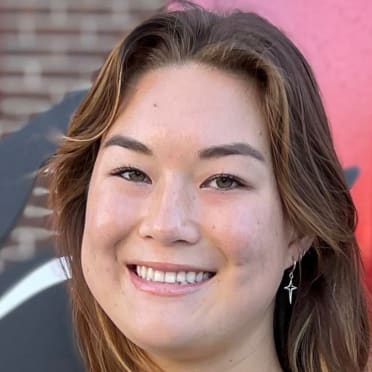NEW YORK -- Michael Conforto left second base early. Except he didn't.
One inning -- and a one-hour, 38-minute rain delay -- later, Starling Marte was out at the plate on an outfield assist. Until he wasn't.
The Dodgers' 7-5, 13-inning win over the Mets on Friday night at Citi Field featured not one, but two strange plays involving tag-up plays in a matter of innings.
Conforto avoided a double play in the third inning due to a rulebook technicality, which dictates that runners can advance while attempting to tag up as soon as a fly ball touches a fielder -- even if said fielder doesn’t immediately catch the ball.
The rulebook definition of a “catch” came into play with Conforto on second base, Shohei Ohtani on first and Mookie Betts batting. Betts sent a fly ball to right-center field, where Tyrone Taylor and Juan Soto both converged underneath it. The ball glanced off Soto’s glove multiple times before popping up in front of Taylor. The center fielder grabbed it with his bare hand before it hit the turf.
By that point, Conforto had already left second base and was on his way to third. Taylor’s throw came into second, where Francisco Lindor fielded it and stomped on the bag, believing that was all he needed to do to complete a double play. (Apparently for that reason, Lindor did not attempt to tag Ohtani, who slid in safely to second.)
But umpires ruled both runners safe and upheld the ruling upon video review. The reasoning, as crew chief Marvin Hudson announced it to the crowd, drew on the very rulebook definition of a catch. From Major League Baseball’s official glossary of terms, “a catch is legal if the ball is finally held by any fielder, even though juggled, or held by another fielder before it touches the ground. Runners may leave their bases the instant the first fielder touches the ball.”
“I just learned that rule,” Taylor said with a laugh.
The reasoning for this definition, according to Apple TV+ umpiring consultant Brian Gorman, is “that an outfielder can actually juggle the ball all the way in and prevent the guy from advancing. … A good outfielder could juggle it all the time, and [the runner] will never be able to take off.”
“I’ve seen that one,” Mets manager Carlos Mendoza said. “You don’t see it too often, but once the ball hits the fielder’s glove, that’s when you go.”
The obstruction call, however, is a ruling Mendoza believes he had never previously seen over nearly three decades in professional baseball.
When Marte tagged up at third base and attempted to score on Pete Alonso's flyout to right in the bottom of the fourth inning, right fielder Teoscar Hernández fired a 91.6 mph dart to the plate that was right on the mark. Marte was called out.
Then the umpires on the field ruled that the way third baseman Max Muncy was positioned had blocked Marte's view of Hernández in right field, preventing him from getting the best possible break off third. The initial decision on the field was overturned, and Marte was safe at home.
It was ruled a Type 2 obstruction on Muncy – whose fielding error earlier in the inning had allowed Marte to reach second on an infield single – and a sacrifice fly with an RBI for Alonso.
Muncy said that he was aware of the rule in question, but it's typically not an issue as long as the third baseman is not standing right next to the runner at third.
Per MLB Rule 6.01(h)(2): “If no play is being made on the obstructed runner, the play shall proceed until no further action is possible. The umpire shall then call “Time” and impose such penalties, if any, as in his judgment will nullify the act of obstruction.”
"The way you explain it is, if the ball gets cut from the first baseman, you have to be there to make a play. And [third-base umpire Tripp Gibson] felt that I wasn't far enough away," Muncy said. "He felt that I was purposely doing it, and he felt that I made a conscious effort to stand in the way. Every third baseman in the league does that. Never seen it called, and it was actually called twice tonight."
Muncy noted that Gibson also made the obstruction ruling on Mets third baseman Brett Baty in the 13th, when Andy Pages gave the Dodgers an insurance run on a sac fly.
“You look at that visual obstruction, he called it twice, once on us, once on them," Dodgers manager Dave Roberts said. "And that’s a Gibson umpire discretion call. So at least he was consistent.”

